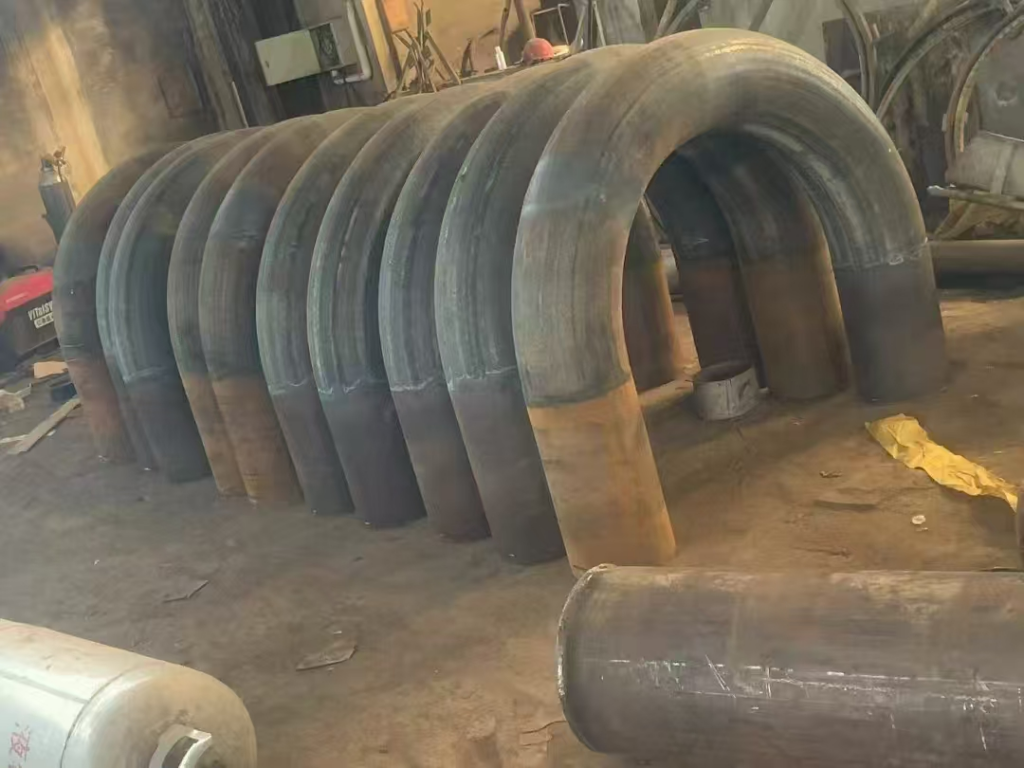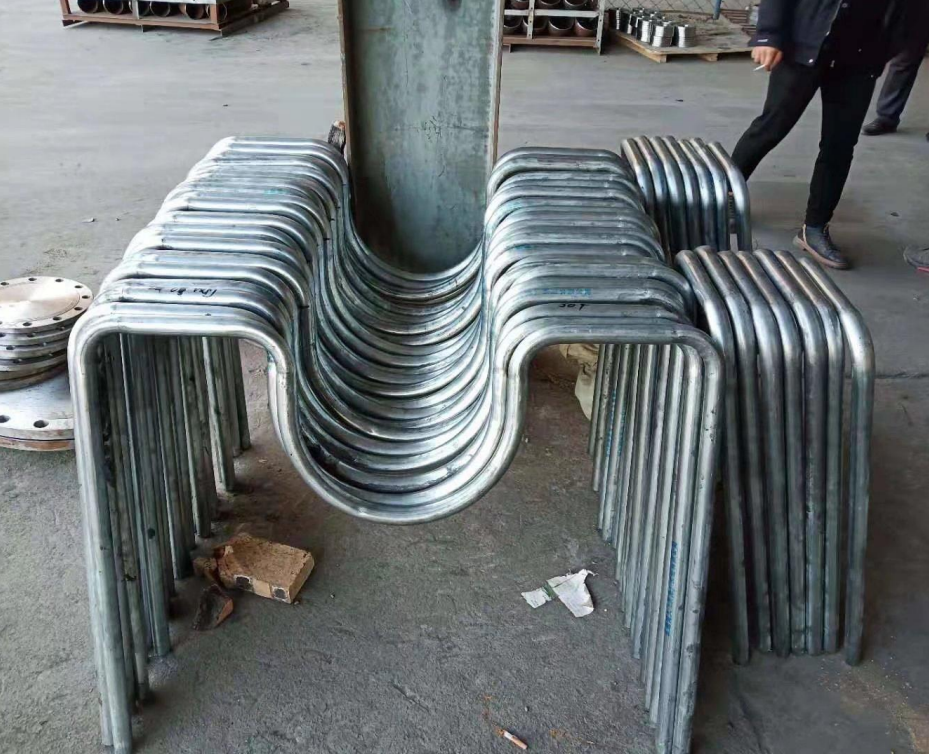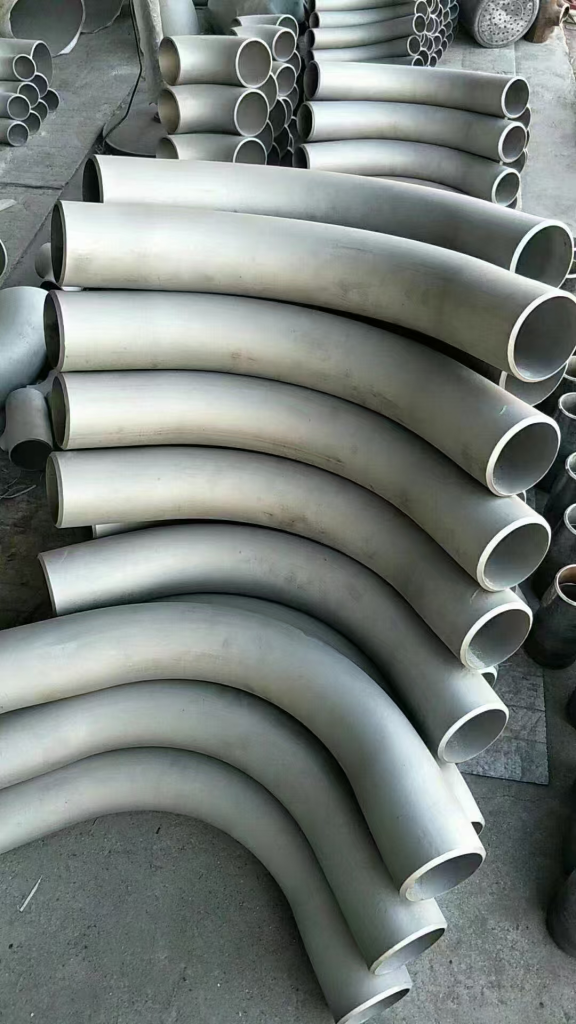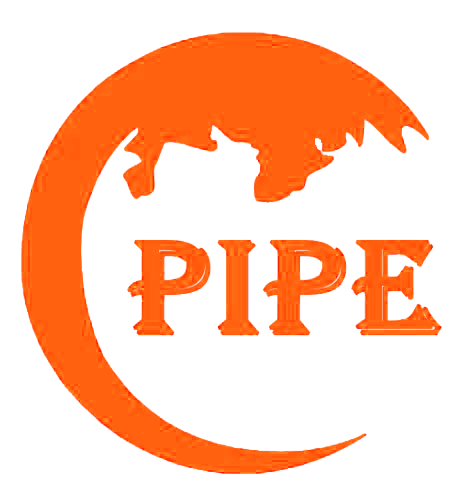Project Info
bent pipe products



Introduction to bent pipe products
1. What is a bent pipe?
Bent pipes are pipe fittings made by bending straight pipes, widely used in fields such as petroleum, natural gas, chemical, construction, and machinery. The design of bent pipes can change the direction of the pipeline and adapt to complex pipeline layout requirements.
2. Main characteristics of bent pipes
① Diversified bending angles: Common angles are 45 °, 90 °, 180 °, and other angles can also be customized according to needs.
② High strength and durability: Made of high-quality materials to ensure stability in high-pressure and high-temperature environments.
③ Smooth inner wall: reduces fluid resistance and improves conveying efficiency.
④ Multiple material options: Carbon steel, stainless steel, alloy steel and other materials can be selected according to the usage environment.
⑤ Wide range of applications: Suitable for various industrial pipeline systems.
3. Types of bent pipes
①Classified by bending method:
Cold bending pipe: bent at room temperature, suitable for thin-walled and small-diameter pipes.
Hot bend pipe: bent by heating, suitable for thick walled pipes and large-diameter pipes.
②Classification of bending angles:
45 ° bend pipe
90 ° bend pipe
180 ° bend pipe
Customized angle bend pipe
③ Classified by manufacturing process:
Push bending pipe: formed through push molding process, suitable for large-scale production.
Pressing bend pipe: formed by mold pressing, suitable for high-precision requirements.
Welded bend pipe: made through welding process, suitable for large-diameter pipelines.
4. Application areas of bent pipes
Oil and natural gas: used for directional changes in pipelines.
Chemical industry: Suitable for conveying pipelines of corrosive media.
Construction industry: used for pipeline layout in HVAC systems.
Power industry: suitable for pipeline connections in boilers and thermal systems.
Shipbuilding: Used for complex layouts in ship pipeline systems.
Mechanical manufacturing: suitable for pipeline connections in hydraulic and pneumatic systems.
Material of bent pipe
Carbon steel: such as Q235, 20 #, A106, suitable for general industrial pipelines.
Stainless steel: such as 304 and 316, suitable for corrosive environments.
Alloy steel: such as P91 and P22, suitable for high temperature and high pressure environments.
Other materials: such as copper, aluminum, titanium, etc., suitable for special needs.
5. Technical parameters of bent pipes
Outer diameter range: DN15- DN2000 (or customized according to customer needs).
Wall thickness range: 1mm -50mm.
Bending radius: 1D, 1.5D, 2D, 3D, 5D (D is the outer diameter of the pipeline).
Execution standards:
National standards: GB/T 12459, GB/T 13401.
American standards: ASME B16.9, ASME B16.28.
European standards: EN 10253, DIN 2605.
6. Production process flow
①Material selection: Choose suitable materials according to customer needs.
② Cutting and cutting: Cut the straight pipe into the required length.
③ Heating (hot bending process): Heating the pipeline for bending.
④ Bending forming: Use a pipe bending machine for bending processing.
⑤ Surface treatment: Polish, sandblasted, or coated the bent pipe.
⑥Quality inspection: Ensure product quality through size testing, pressure testing, etc.
⑦Packaging and shipping: Packaging and transportation are carried out according to customer needs.
